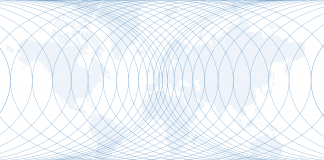We have recently discussed China’s problems, Russia’s ability to defeat Ukraine, the economic condition of Europe and the wars of the Middle East. All of these are extremely important, but none are as crucial as the United States, the country with the largest economy in the world and a military that, if fully deployed, can be decisive.
Some of you may recall our model of cycles, which is now signaling increasingly intense political, social and economic problems that will last until the election of 2028, when a new president will be elected and, regardless of his wishes, will dramatically shift the country’s direction. A few months ago, I thought we would not have to wait until 2028, but that the 2024 election might signal the shift. That isn’t happening. Or, to be precise, the historical model of change every 50 years is continuing. The last transitional moment was the Reagan presidency, which started 43 years ago.
To understand the coming changes, it is useful to think of the last cycle in the 1970s. That decade was marked by a war with significant impact on the American economy, combined with an oil embargo. President Richard Nixon ended the link between the dollar and gold, and massive unemployment, dramatic inflation and staggeringly high interest rates ensued. Exports from Japan shocked domestic auto manufacturers. Anger at the Vietnam War led to social conflict in the United States, with racial conflict turning into riots in Detroit in the late 1960s, and in 1970, campus riots at Kent State turned deadly when students were shot by the National Guard. In the end, the president resigned to avoid impeachment and possibly prison.
The chaos grew through the 1970s, but it was the economic situation that drove it and in which the chaos was rooted, with the president trying to use the last cycle’s model to solve the problems. During the Depression, President Franklin Roosevelt tried to increase taxes on the rich and corporations and attempted to funnel money to the poor. That, plus World War II and the jobs it created, ended the crisis. Continuing that model into the 1970s, however, created a new problem: a shortage of investment capital. The only solution was transformation, shifting the tax burden from the investing class to the middle and lower classes, which increased corporate sales and demand for workers. President Jimmy Carter and the Democratic Party opposed this reversal of the Roosevelt model – which is normal for those linked to the last cycle – and in 1980 Ronald Reagan became president. Reagan pursued the only option: transforming the tax code. That worked well, but now that cycle is done. Nearly 50 years have passed, and a transition to a new model is inevitable.
Just as the economic crisis culminated in the latter half of the 1970s, along with all the other battles, the same thing is shaping up now in the 2020s and will become most intense by the elections of 2028.
The full order of battle is not yet clear, save for the economic crisis developing from the government creating excess money and the resulting inflation. As with Carter, however, it is not sustainable. Alongside this is the staggering amount of student debt, which flows into universities, allowing them to pursue projects that undermine their basic mission and maintain racial tension. The essential problem is again the relevance of the tax system in a shifting reality, but the system is merely the exterior of a much more complex reality.
Regardless of who is elected president, there will be rage and fear in the public, as there was in 1980 when voters elected an actor whose enemies believed he was an ignoramus. But in truth, the president presides; he does not rule. It is reality that forces action, and a new president will feel the pressure and respond. It is important not to focus on the president himself but on understanding the problem. As we look for leadership, neither candidate for the presidency will soothe the system. That must come later. I’ve spoken of this before, but we are now coming closer to the crisis.






